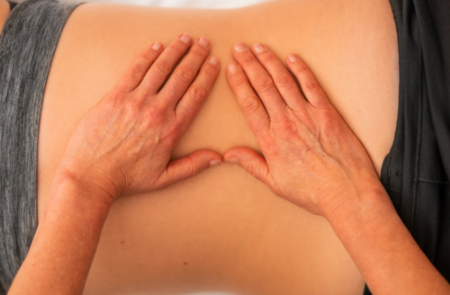3 Great Self Treatment Tools To Use At Home After Your Myofascial Release Session
- dynamicbodyworkmfr
- Nov 25, 2023
- 3 min read
Do you have trouble deciding what would be the best tool to use for home when performing your selfcare? Unsure what will be the most effective for the type of pain you are having? Different tools help alleviate different types of pain. Below I have compiled a few of my favorite tools that I typically recommend to my patients.
Many people suffering from chronic pain and Fibromyalgia have multiple spots throughout their body that are tender. These are called active trigger points. Often these can be in our upper back, neck, and lower back muscles. The muscles and connective tissue, the fascia, become abnormally tense and tight, causing inflammation, irritation and inhibition of muscle function.
Medications cannot treat these knots. The knots need to be addressed physically by way of releasing the tissue. There are a multitude of treatments that will help in releasing the tissues such as acupressure, acupuncture, myofascial release, and dry needling. However, it is important to know how to be able to self-treat at home using some of the same principles and home tools to continue to release the tissues.
A very effective way to treat these knots is by gentle stretching or sustained pressure to allow the knot to soften.
Tools that allow for gentle stretching of the fascia or that apply sustained pressure to loosen the knots are a must have for self -treatment.
Keep in mind that the releases are never forced. These tools are used with the concept of gentle sustained pressure into the areas that are tender or tight, and are typically applied for at least 5 minutes.
4” Inflatable Ball
This tool can be used laying down, sitting, or standing and leaning against a wall. Gently roll on the ball to assess the area that needs treatment. Once you find that “sweet spot” of discomfort, allow yourself to sink onto the ball to gently release the fascia and soften the trigger points. The release/softening of the tissues usually starts happening at least the 3 minute mark. And, sometimes it takes a little longer. The 4" inflatable ball is great for trigger points and tight areas in the buttocks and low back area, mid back and shoulder blade. If you have a ball pump (like for soccer ball) you can adjust the pressure in the ball to a level that is comfortable for you.
Soft Foam Roller This tool is excellent for helping with posture and opening up the front of our body. Lie on this foam roller (you can also use a rolled up towel) with your head, neck, and spine supported by the roller, with arms out to the side in a T-position. This allows your body to relax the tightness held in our shoulders and neck and gives a gentle stretch to the chest wall, front of the shoulders, and neck. We are unfortunately a sitting society and we spend so much of our time with our head and neck leaning forward as we look at computers or phones. This position generates significant neck and upper back tightness and trigger points in the upper back muscles. Spending a few minutes a day in the opposite position, allowing the shoulders to relax and soft around a soft foam roller or rolled up towel can ease this tension and allow trigger points in the upper back to soften. This a also a great time to take some good deep breaths, helping the ribs to expand.
Cranio-cradle
I highly recommend this tool for my patients who suffer from headaches, TMJ pain and overall neck pain. It is also a great tool to use for general body relaxation, as it often provides a sense of full body muscle relaxation when used at the base of the skull. It is a small soft foam cushion that can be placed under your neck, upper back, or lower back for a nice fascial stretch of those areas. If you are prone to tension headaches you will want to give this tool a try.
For more information on how to use these tools or if you have any questions that were not answered here, please give us a call at (619)823-9478







Comments